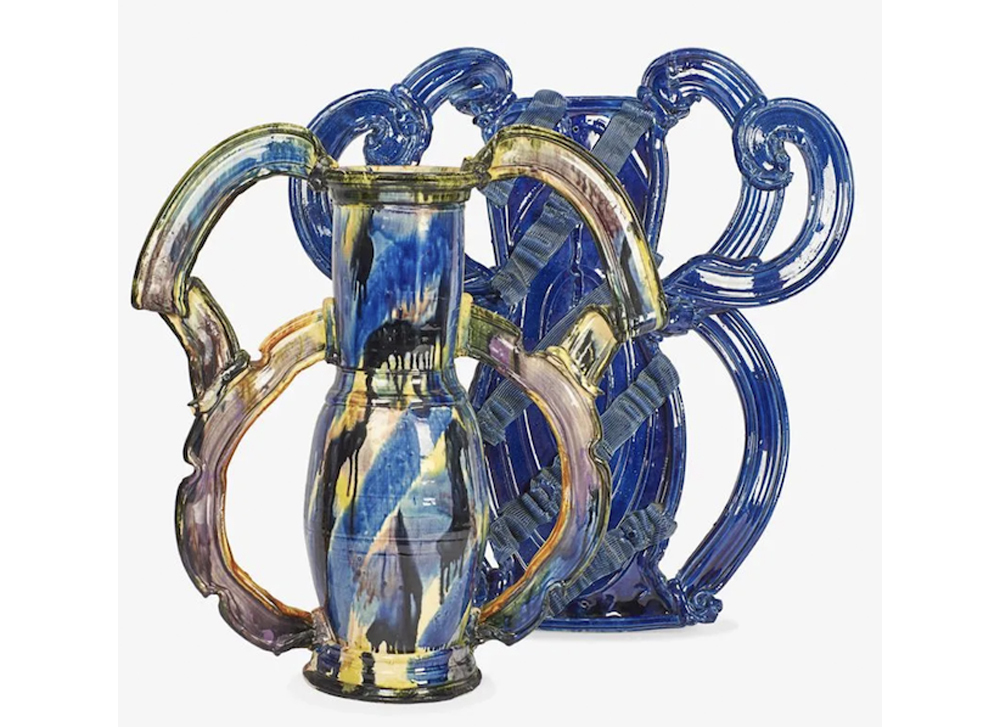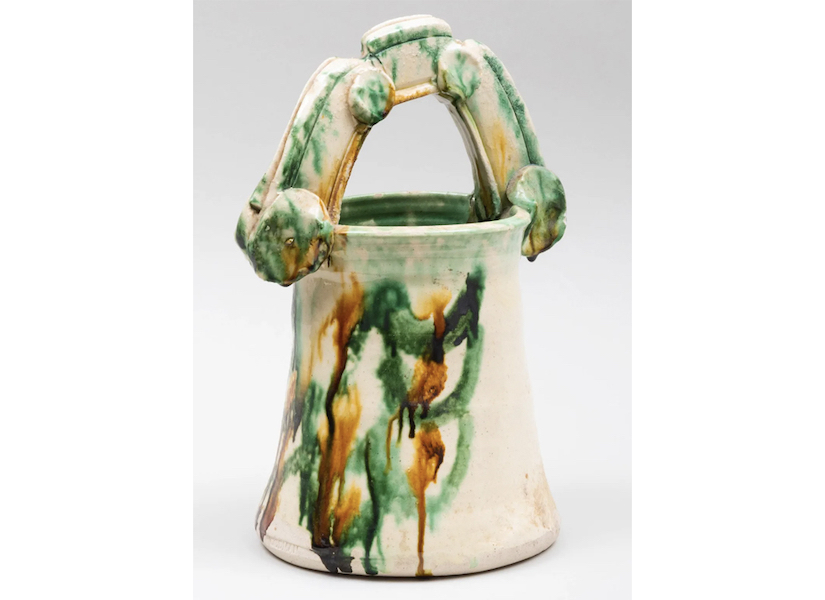
NEW YORK — Renowned postwar ceramicist Betty Woodman described her work as a marriage of surface to form, and in painting the surface, she directed audiences to see the form in new and different ways.
The Connecticut-born artist (1930-2018) pushed the medium of clay to new heights, using ordinary shapes, such as bowls, vases and baskets, as the framework for engaging in outrageous experiments in sculpture. During her lengthy career, Woodman acknowledged that ceramics was a male-dominated field and her male colleagues received more acclaim and better pay. While she struggled at times to be taken seriously among her peers, she rose to the challenge and created an important body of work that has stood the test of time. She had her first solo exhibit at a Nebraska museum in 1970, and in 2006, she became the first living woman artist featured in a retrospective show at the Metropolitan Museum of Art in New York.
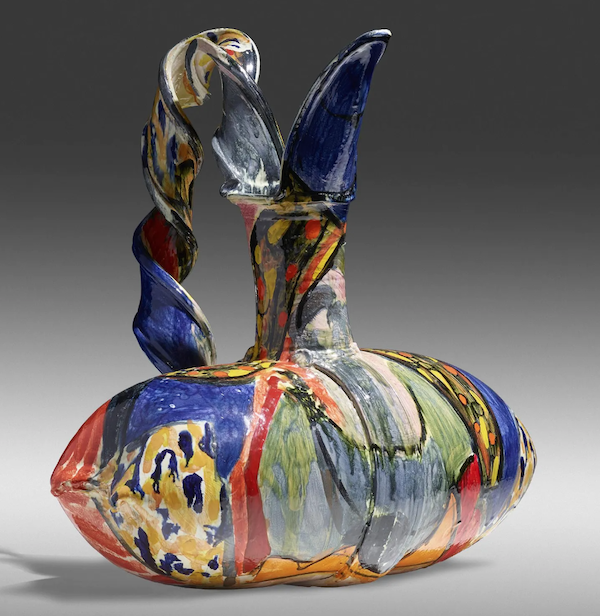
Among her most distinctive forms was the pillow pitcher, examples of which are well represented in many institutional and private collections. A 1998 Autumn Pillow pitcher by Betty Woodman, having splashes in multiple colors of glazes, attained $55,000 plus the buyer’s premium in September 2022 at Rago Arts and Auction Center. The pitcher measures 24 ¾ by 25 ½ by 18in and is a form that the artist returned to often during her decades-long career. Reportedly inspired by Chinese porcelain pillows, Woodman would create two ceramic cylinders that she connected at the midline and pinched at the ends to give the vessel the illusion of an overstuffed pillow. The vibrant colors she would employ added to the piece’s energy.
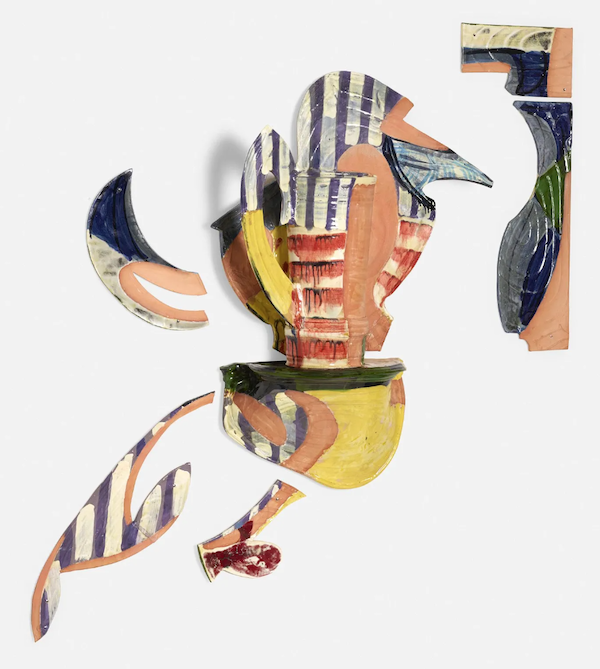
The Woodman Family Foundation’s website notes that Woodman’s vases were an integral part of her oeuvre and symbolized the human body in an abstracted form. “Functioning as animated abstract ceramic bodies, her sculptural vessels are presented solo or in pairs and groups, interacting as theatrical figures upon a stage,” the foundation writes. Handles are turned into arms and spouts can become heads with facial features in relief. A Balustrade relief vase #13, seeming to evoke a female form and comprised of up to seven elements, achieved $38,000 plus the buyer’s premium in September 2020 at Rago Arts and Auction Center. Woodman elevated the form of a vase into something to be deconstructed and rebuilt to be explored in exacting detail. Her vases have been described as “complex juxtapositions of sculptural form and painterly glazing.”
Woodman is considered by many ceramics scholars as one of the key postwar figures in American art. Well traveled, she was inspired by many cultures’ traditions, from Baroque forms to Tang glazes in Asia. She traveled to Italy several times in the 50s and 60s and bought a house there with her husband, George, a painter, in 1968. They also acquired homes in Colorado and New York and thrived in a peripatetic lifestyle until George’s death in 2017.
Much of her work referenced, or implied, architectural constructs as well as the human form. While she started out making functional, easy-to-recognize objects, by the 1970s she had moved to a highly inventive and expressive sculpting style. A ceramic basket, having green and mocha splotches against a white ground, sold for $15,000 plus the buyer’s premium in June 2021 at Stair. The basket seems fairly straightforward at a glance. On closer inspection, however, the artist reveals both a playful nature as well a firm mastery of the medium in the vessel’s notched, tri-part handle and her restrained glazing.

The David Kordansky Gallery in Los Angeles wrote on its website that Woodman combined sculpture, painting and ceramics in such a way as to create a unique formal vocabulary. “Her embodied readings of a diversity of ancient and modern art historical traditions, as well as her fearless pursuits of visual pleasure, posited her as a boldly contemporary figure whose work proves revelatory in discussions about gender, modernism, craft, architecture, and domesticity.”
By the 1980s, in a change likely spurred by the 1981 death of her daughter, her work became increasingly abstract. She seemingly abandoned creating functional pottery to instead embark on an intensely focused exploration of the possibilities held by the medium of ceramics. A 1980s Betty Woodman bowl having a basket-like form realized $3,600 plus the buyer’s premium at Heritage Auctions in April 2019.
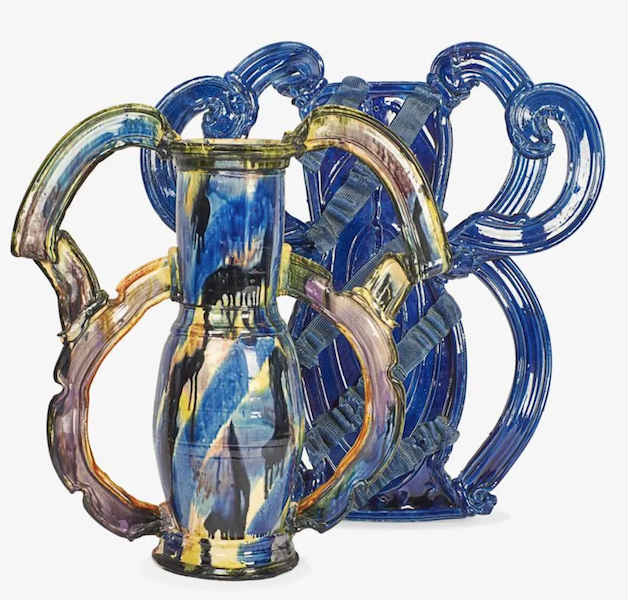
Another motif of her mid-1980s work is her large two-in-one morning vases with shadows, which called for her to sculpt a vase with a mirror image behind in a darker hue as if it was that vase’s shadow. (The two halves are interconnected into one piece.) A large circa-1985 example of this vase form made $22,000 in September 2019 at Rago Arts and Auction Center.
Betty Woodman began sculpting when she was 16 and worked until her final years, not content to be satisfied by her already impressive contributions to the field of ceramics. She was always testing new techniques and approaches, and creating conversations between her pieces. She leaves a powerful legacy for those who would follow in her footsteps.


